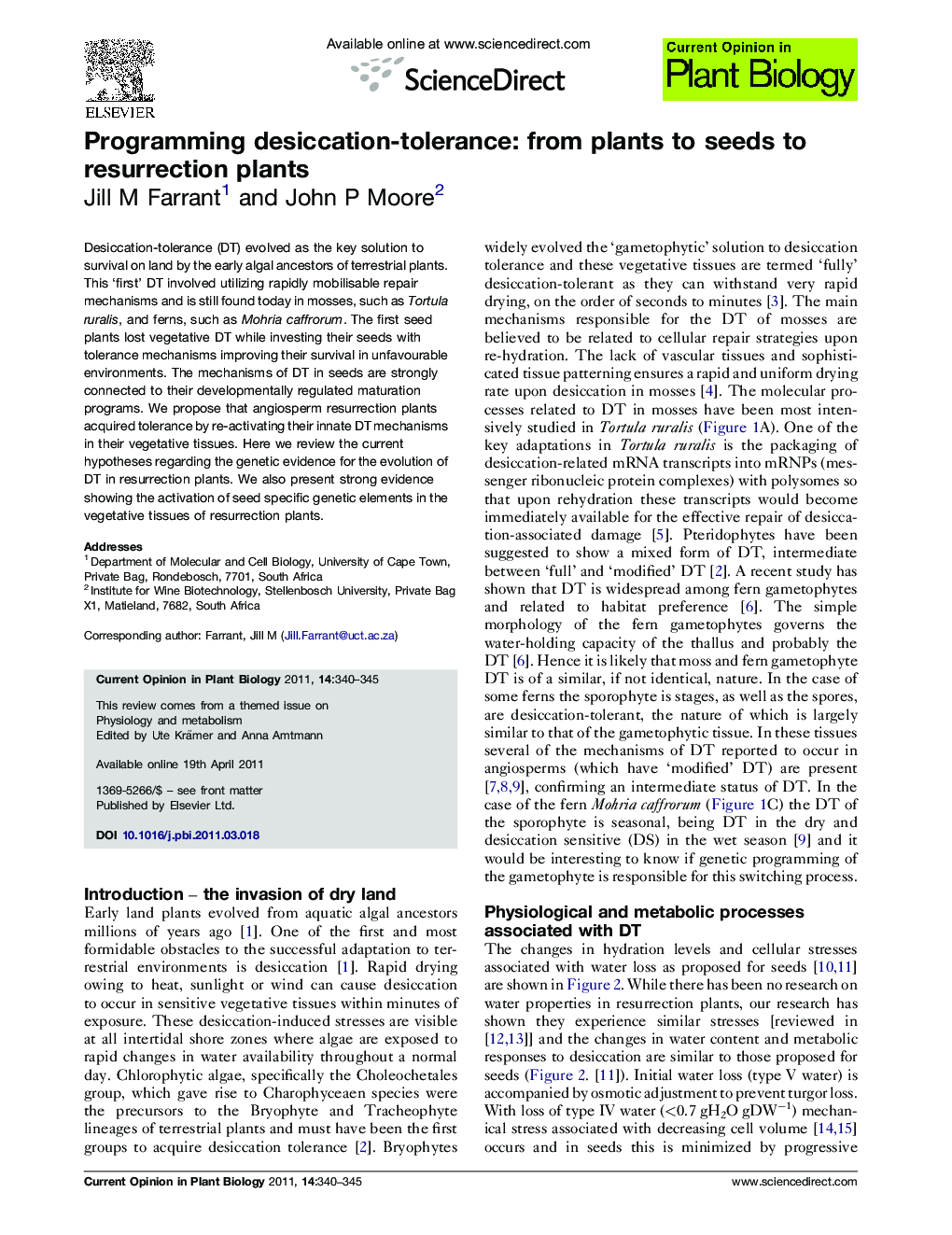| Article ID | Journal | Published Year | Pages | File Type |
|---|---|---|---|---|
| 2046270 | Current Opinion in Plant Biology | 2011 | 6 Pages |
Desiccation-tolerance (DT) evolved as the key solution to survival on land by the early algal ancestors of terrestrial plants. This ‘first’ DT involved utilizing rapidly mobilisable repair mechanisms and is still found today in mosses, such as Tortula ruralis, and ferns, such as Mohria caffrorum. The first seed plants lost vegetative DT while investing their seeds with tolerance mechanisms improving their survival in unfavourable environments. The mechanisms of DT in seeds are strongly connected to their developmentally regulated maturation programs. We propose that angiosperm resurrection plants acquired tolerance by re-activating their innate DT mechanisms in their vegetative tissues. Here we review the current hypotheses regarding the genetic evidence for the evolution of DT in resurrection plants. We also present strong evidence showing the activation of seed specific genetic elements in the vegetative tissues of resurrection plants.
► Reviews the current hypotheses regarding the genetic evidence for the evolution of DT in resurrection plants. ► Compares and contrasts the physiological and molecular responses to desiccation in resurrection plants with orthodox seeds. ► Presents strong evidence showing the activation of seed specific genetic elements in the vegetative tissues of resurrection plants.
